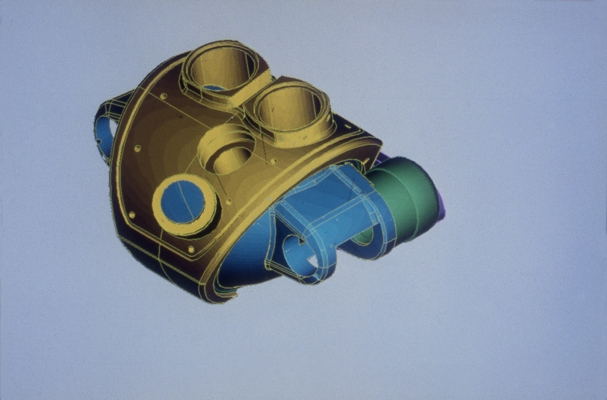During the 1980s, Professor Carpentier, known for his innovations in heart valve repair, dreamt of creating a prosthesis that could be entirely placed inside the rib cage, would respect the human physiology and would be able to function unfailingly for several years. When he requested assistance from Cetim in 1985, his project seemed utopian. The necessary motor or smart control technologies were still in their early stages. However, Cetim decided to take up the challenge with support from Anvar (the French agency for innovation and research).
A functional prototype
It took one year to make a physical mock-up whose purpose was to validate fundamental choices: a membrane system, enclosed within a titanium shell, operated by pumps powered by rotation reversing motors. Three more years were necessary for the implementation of several functional prototypes. Then, Cetim developed the electronic control of the actuators and implemented medical regulation of the cardiac output. The next step consisted in testing the prosthesis on a specially designed test bench before undergoing animal testing.
Towards human implantation
In 1993, the project entered a new phase with the arrival of an industrial partner, Matra-Défense, which miniaturised the prosthesis and performed the integration of the electronics. This led to the creation of the Carmat company, which initiated the first human experimentation phase in December 2013. Today, Cetim continues to work in the field of medical devices, especially joint implants and, more recently, on the design of a painless mammography unit.



